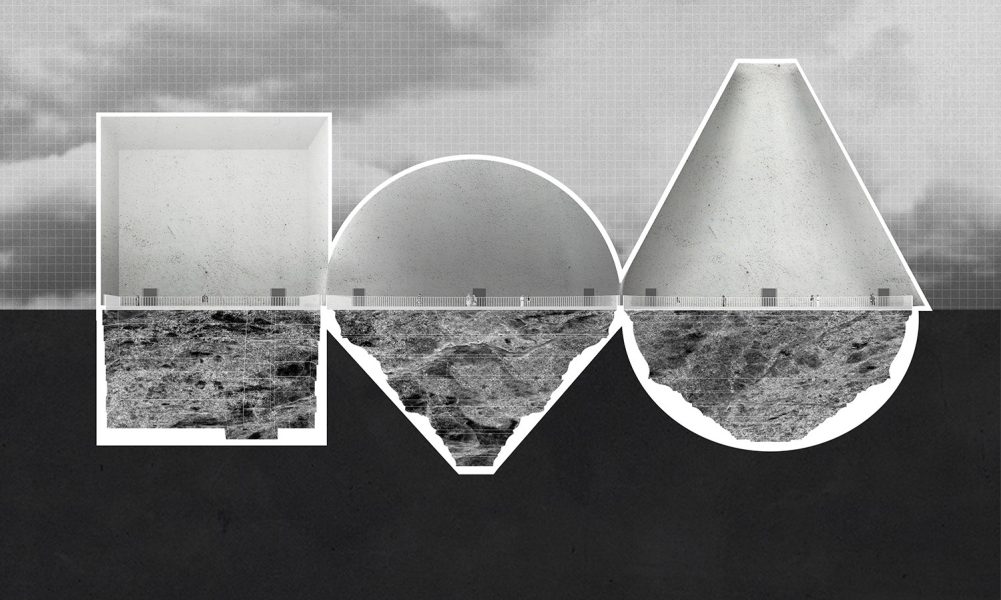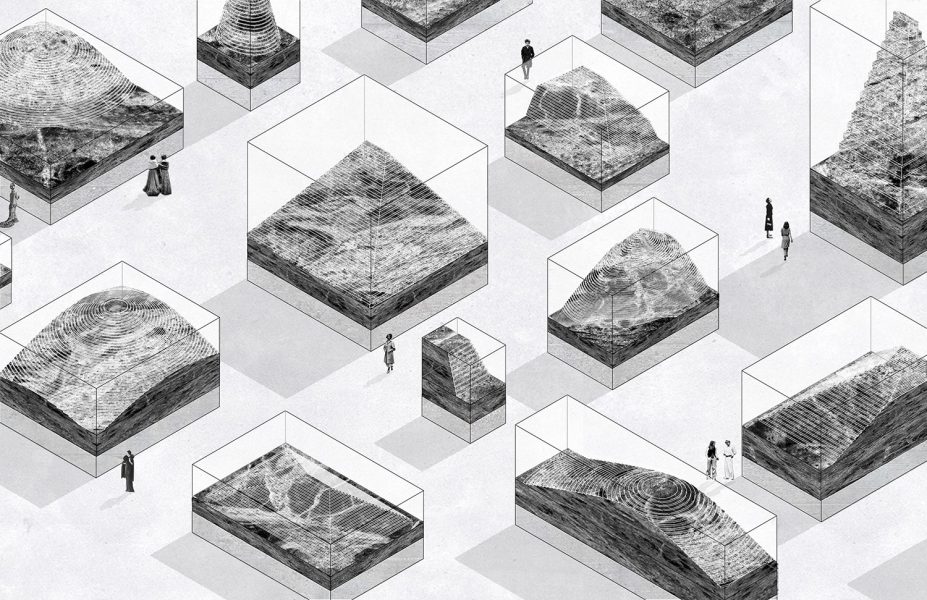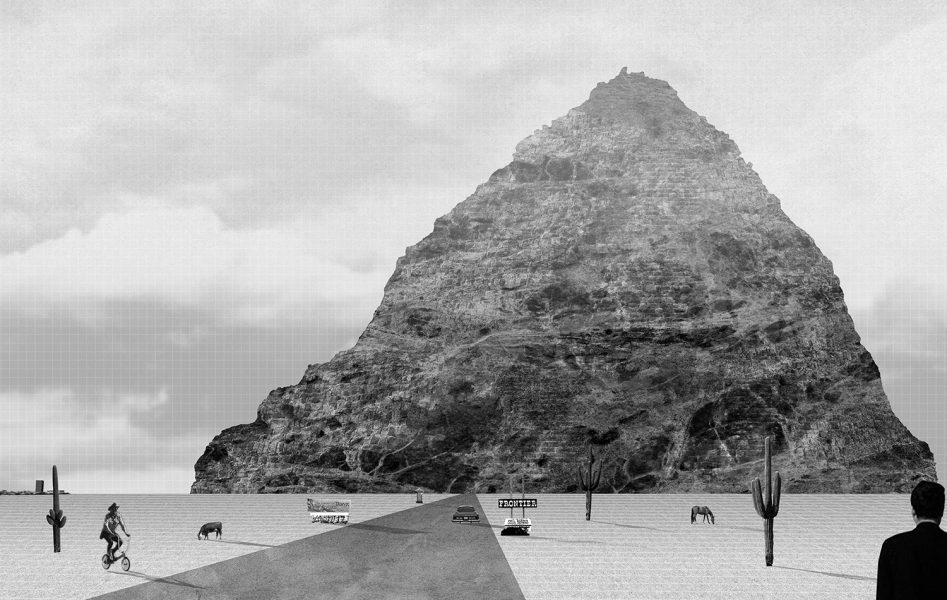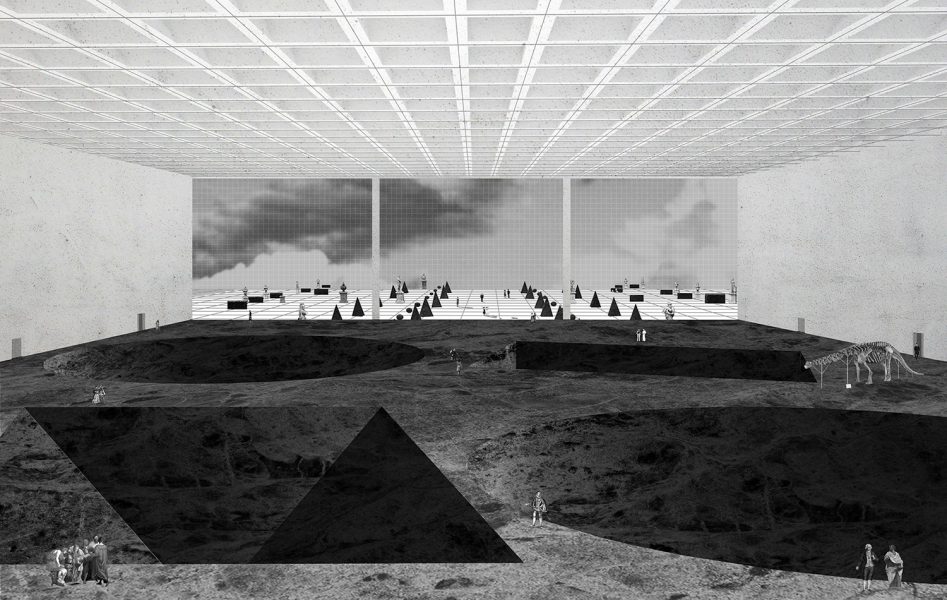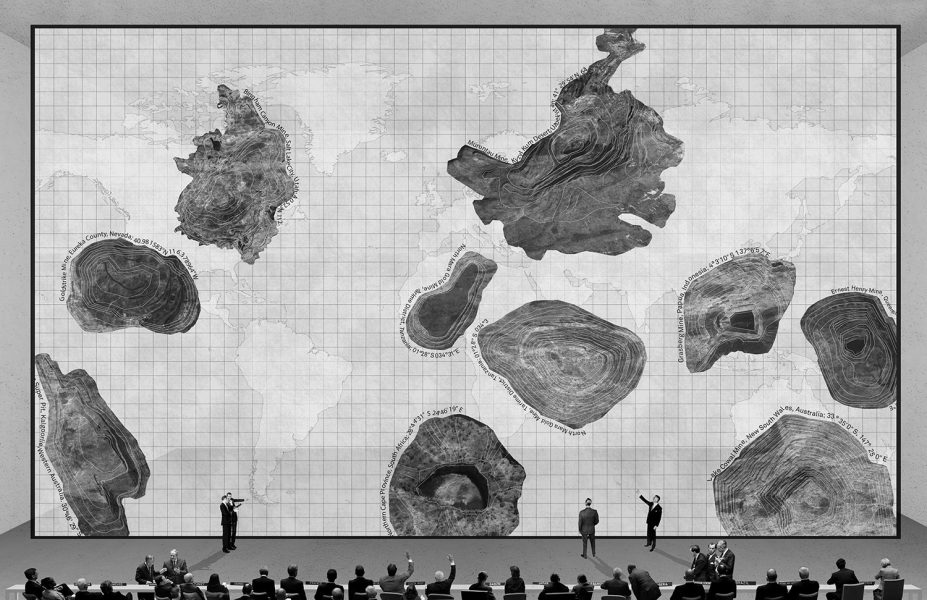HONORABLE MENTION AWARD, Blank Space Fairy Tales Competition, 2015
Year: 2015
Project Team: Neyran Turan (partner-in-charge), Anastasia Yee, Melis Ugurlu
Press Coverage/Reviews: SOCKS, It's Nice That, PLOT, OSSO Magazine, The Fisheye Magazine
Once upon a time in the Zero-carbon Hedonistic Era, the entire world was finally sustainable. Clean-energy technologies were abundant and ubiquitous. Large quantity of energy-efficient light bulbs, wind turbines, electric car batteries and solar panels would come with a price, however. Since all of these clean-energy technologies relied on Rare Earths, a group of seventeen chemical elements and their abundant extraction from the earth's surface, significant worldwide increase in their demand led to the scarcity of these minerals. Nearly all of the Rare Earths were discovered in the 19th century but their use mostly proliferated in the Zero-carbon Hedonistic Era because of their association with green technologies. Not alarmed by the possible tragic outcomes of the further mining of these minerals, the world celebrated their delirious consumption with more car batteries and solar panels until very little of these minerals were available. Soon after the depletion of this precious resource was officially announced, in an attempt to prevent major geopolitical conflicts, United Council of Rare Earths was established to promote international co-operation regarding this matter.
In its inaugural meeting, the Council members drafted the text of the Declaration by the United Council of Rare Earths, which was signed by all countries. After a long meeting, the unanimous vote was held to ban further Rare Earth mining and to build a museum that would house and preserve remaining Rare Earth mines of the world, and would carry their legacy to future generations. The museum was named as the Museum of Lost Volumes.
